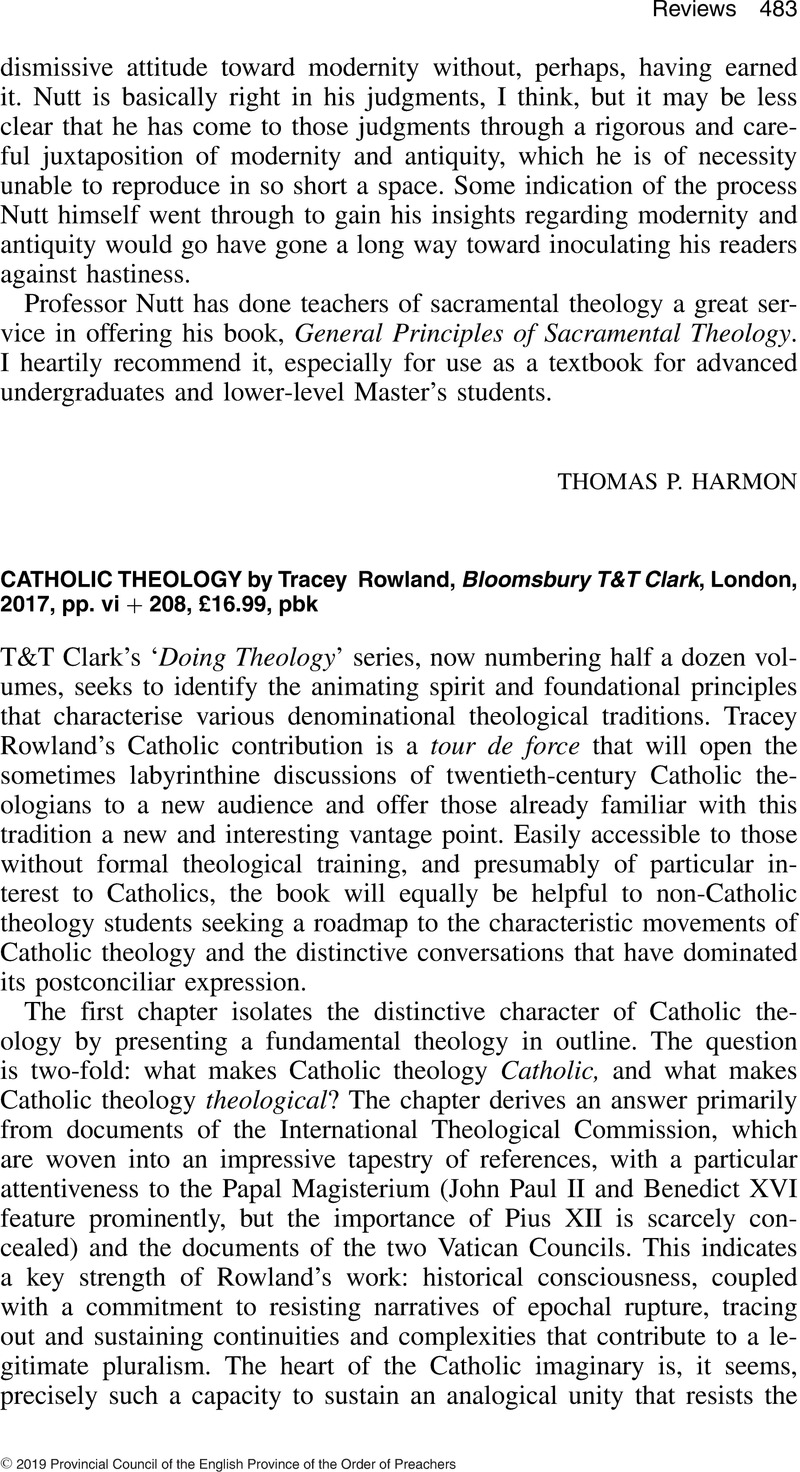No CrossRef data available.
Article contents
Catholic Theology by Tracey Rowland, Bloomsbury T&T Clark, London, 2017, pp. vi + 208, £16.99, pbk
Review products
Catholic Theology by Tracey Rowland, Bloomsbury T&T Clark, London, 2017, pp. vi + 208, £16.99, pbk
Published online by Cambridge University Press: 01 January 2024
Abstract
An abstract is not available for this content so a preview has been provided. Please use the Get access link above for information on how to access this content.

- Type
- Reviews
- Information
- Copyright
- Copyright © 2019 Provincial Council of the English Province of the Order of Preachers


